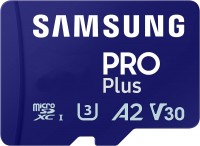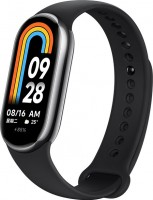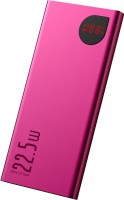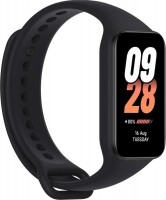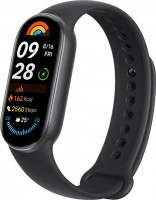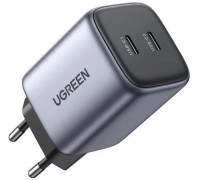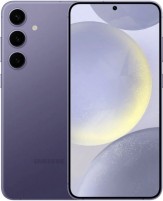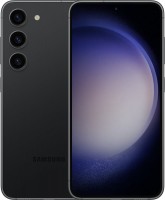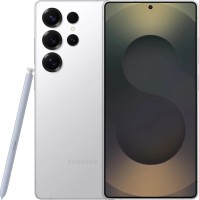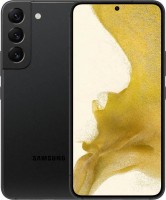Xiaomi Redmi 9 32 GB / 3 GB
 | Outdated Product £65.09 The contender for the title of "people's smartphone of 2020" from the low-cost segments of the mobile device society. The model uses a slightly “decollete” large-diagonal screen (6.53") based on an IPS-matrix in FullHD + format (2340x1080 pixels). And this is great, because the predecessor model in the face of Redmi 8 showed an image in HD + resolution (1520x720 pixels). The basis of the “engine compartment filling” of the mobile gadget was an eight-core chipset with gaming ambitions Mediatek Helio G80. Together with him, they work for the benefit of the nimble responsiveness of the smartphone 3/32 GB of memory (the minimum required today). In the same row with the three lenses of the main camera on the back of the Xiaomi Redmi 9 32GB case, there is a fingerprint sensor area. Another auxil...iary “eye” of the quad camera is located a little to the right in the company of a flash. The energy core of the model is a solid-capacity 5020 mAh battery with support for accelerated 18-watt charging. Some modifications of the device additionally carry an NFC on board (be sure to check this point with the seller of the goods at the order stage). |
The contender for the title of "people's smartphone of 2020" from the low-cost segments of the mobile device society. The model uses a slightly “decollete” large-diagonal screen (6.53") based on an IPS-matrix in FullHD + format (2340x1080 pixels). And this is great, because the predecessor model in the face of Redmi 8 showed an image in HD + resolution (1520x720 pixels). The basis of the “engine compartment filling” of the mobile gadget was an eight-core chipset with gaming ambitions Mediatek Helio G80.
Together with him, they work for the benefit of the nimble responsiveness of the smartphone 3/32 GB of memory (the minimum required today). In the same row with the three lenses of the main camera on the back of the Xiaomi Redmi 9 32GB case, there is a fingerprint sensor area. Another auxiliary “eye” of the quad camera is located a little to the right in the company of a flash. The energy core of the model is a solid-capacity 5020 mAh battery with support for accelerated 18-watt charging. Some modifications of the device additionally carry an NFC on board (be sure to check this point with the seller of the goods at the order stage).
|
| ||||||||||||||||||||||||||||||||||||||||||||||||||||||||||||||||||||||||||||||||||||||||||||||||||||||||||||||||||||||||||||||||||||||||||
Always clarify the specifications and configuration of the product with the online store manager before purchasing.
Catalog Xiaomi 2025 - new arrivals, bestsellers, and the most relevant models Xiaomi.


Forget Redmi 8
Last year’s Redmi 8 didn’t take off at all and looked like a loser compared to the more balanced Redmi Note 8. In 2020, the guys at Xiaomi took a breath and are ready to throw themselves back into the fray for the title of best inexpensive smartphone of the year. The new Redmi 9 is not just a step forward, but several big leaps towards the future. When else will you see a good Full HD display, a quality quad camera, Wi-Fi 5, USB-C, NFC, and a 5020 mAh battery with fast charging in a $150 smartphone? That's what we didn't see.
Smartphone for games for $150?
Smartphones of the Redmi line have always been slightly faster than competitors. But not Redmi 8, which was equipped with an ancient Snapdragon 439 processor found along with the remains of a Canadian tyrannosaurus rex. In Redmi 9, the situation was corrected and the place of the clumsy processor was taken by the Mediatek Helio G80, which gave an approximately twofold increase in performance. Instead of three gigabytes of LPDDR3 RAM, we got the same three gigabytes, but a faster LPDDR4x. The speed of the internal memory has also increased. It's still eMMC, not UFS, but a class higher. As a result, all this goodness handles well even with demanding toys like World of Tanks: Blitz and Call of Duty: Mobile, delivering 40-50 FPS at medium graphics settings. Throttling will periodically remind you of itself by heating and lowering the frequency of the cores, after all, this is a processor from Mediatek.
Quad camera and updated design
For the first time in this series, the same number of camera modules are installed in the smartphone as the flagship models. The 13 MP main module takes quite decent and well-detailed pictures in good light. But for some reason the night mode was cut out. In turn, portrait, wide-angle and macro cameras add variability, but do not shine with quality. And we also liked the design of Redmi 9. Xiaomi worked on the little things and now outwardly it is not much different from smartphones twice or even three times more expensive. The back cover with iridescent paint in the light looks more neat and premium, so to speak. Less glitz of poverty. The quad-camera is now located in the centre of the back cover and is surrounded by a small ring that visually connects the camera blocks and flashes together. Well, the colour options came straight from older models like Xiaomi Mi 10 and Xiaomi Mi 10 Pro, thereby further enhancing the similarity.
It's great that for all its merits, the Redmi 9 has no noticeable cons. It looks like Xiaomi succeeded again.























